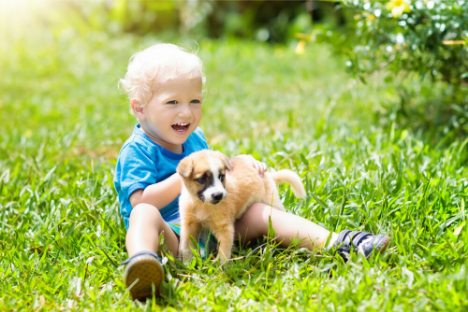
Celebrate National Gardening Week by adding some new plants to your garden or start growing one! With so many planting possibilities, how do you know which ones are okay to cultivate when you’re also a pet parent? It’s not always easy to know the toxicity profiles of various plants if you’ve never grown a garden or had a yard of your own before. Much like small children, pets will often try to eat anything that looks tasty. Your animals don’t know what’s safe to eat and what isn’t, and if they’re curious, they may think your geraniums are worth a nibble. Of course, not every plant is safe for your furry friend to ingest. If your pet is prone to getting into your plants, you may want to add plant species to your garden that won’t get them sick. Here are some common pet-safe (and not-so-safe) plants for your yard.

Basil
This versatile herb is easy to care for whether you’re growing from seed or transplanting from another container. The leaves give off a pleasant herbal scent that also is a deterrent for mosquitoes. Basil makes a great addition if you’re starting an herb garden!
Boston Fern
Who doesn’t love a leafy fern? Ferns are a classic plant to put in your yard; they love indirect light and moist areas. If you see withered and yellow fronds, trim them off so the leaves can regenerate. With the right environment and care, your fern can expand to appear full and bush-like.
Crepe Myrtle
This tree comes in a variety of colors and blooms each spring. Crepe myrtles love sun and can become great shade bearers when in season. Before they bloom, prune the branches in early spring to promote strong stems and bountiful blooms.
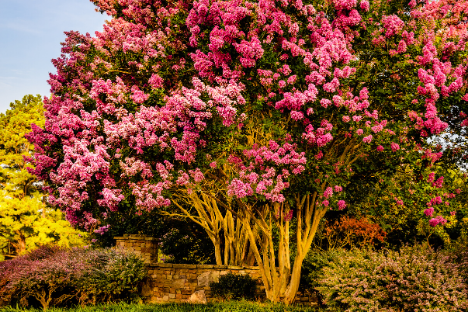
Dill
Plant some dill to add a feathery element to your garden and harvest it to flavor your food. If you trim the leaves throughout the spring and summer, your dill plant will produce for the rest of the season. Dill is safe for dogs, cats, and humans to eat, so this is the perfect addition to your yard!
Grape Hyacinth
Grape hyacinths are short-growing perennials whose florets resemble a grape cluster. They might even look good enough to eat, especially if you’re a curious animal. Grape hyacinths can thrive in sun or shade and can be effective as groundcover. Fortunately, these “grapes” won’t hurt your pet if they try to eat one.
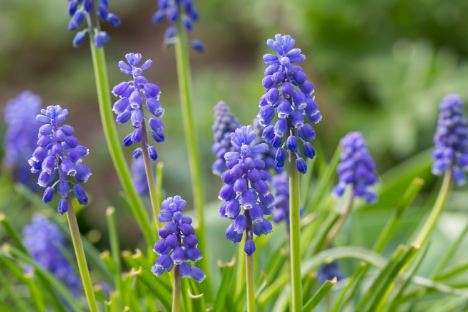
Marigolds
Bring cheer to your garden by planting some marigolds! This annual plant is related to the sunflower and features stunning orange and yellow flowers that can make your garden extra special. They’re hardy plants and tend to thrive in very sunny areas.
Spider Plant
Don’t let the name scare you –the spider plant is a hardy plant with long, narrow leaves. Due to its effective air filtering qualities, it is also a popular houseplant. Whether you plant this indoors or outdoors, it is safe if your pet decides to taste it.
Zinnia
Zinnias are annuals that grow tall and come in a rainbow of colors. Be sure to plant them in a sunny spot –you might even see a butterfly land on one! Once the flower blooms and has withered, cut it away so that new flowers can grow.
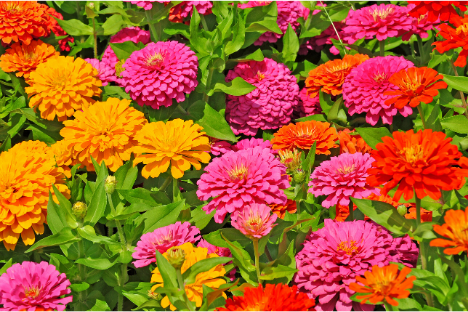
Aloe Vera
Aloe vera plants are a wonderful succulent to grow if your environment permits it. Not only does aloe give your garden visual interest, the gel inside its spiky leaves provides cool and soothing relief. It can even be prepared for human consumption, but keep your pets away from it.
Azalea
From pinks, purples, reds, and everything in between, a few azaleas in your garden can make it seem like a paradise. This perennial shrub explodes with colorful blossoms each spring; consider planting some along your property for a natural “fence”. Since the azalea is in the rhododendron family, your pet should avoid ingesting rhododendrons, too.
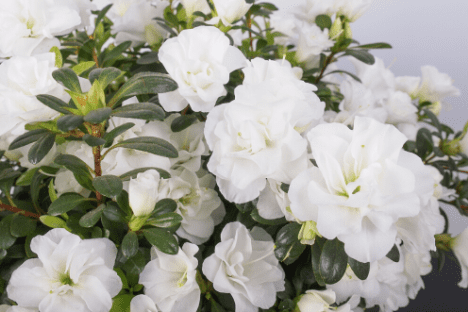
Chrysanthemum
This fall favorite is a perennial that blooms anywhere from September to the first frost of the season. Be sure to space out “mums” when you plant them to avoid root problems. Before the weather gets cold, scatter mulch around the plant’s base to protect the roots from frost.
Daffodils
Fragrant and sunny, daffodils are a spring favorite for many people. They’re among the first flowers to bloom after colder weather has passed, greeting the world with flashes of yellow, orange, or even pink. Take extra precaution if your pet is prone to digging up your flowers, as the bulb is the most toxic part of the plant.
Geranium
Geraniums are a quintessential plant to place at the front steps of your home for some curb appeal. Many people put them in pots for a charming aesthetic and to facilitate winterizing, but they can also be planted in the ground. If planted outdoors, geraniums can bloom from the summer to early fall.
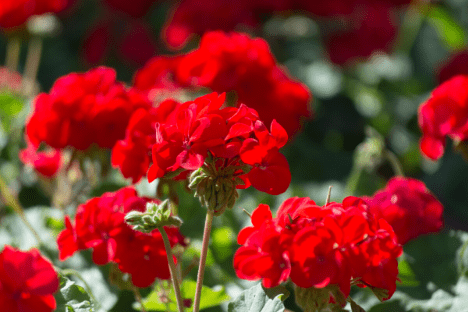
Iris
Plant some of these elegant beauties for gorgeous color schemes during early summer. Irises need to be put in well-drained soil; they are susceptible to root rot if their soil is too wet. It’s best to plant them during late summer to early fall to ensure blooms next season.
Tomato plant
Tomatoes look juicy and delicious hanging on the vine, and your pet might agree with you by trying to eat one. Though it can be all right for a cat or dog to have small pieces of tomato occasionally, they need to be kept away from unripe tomatoes. Along with the plant’s leaves and stem, unripe tomatoes contain a toxin called solanine that causes stomach pain and slowed heart rate, among other issues.
Tulips
Tulips are another timeless springtime floral. Horticultural advancements have produced numerous hybrids, so there is sure to be a variety to suit your tastes. Plant them in an area with full sun with well-draining soil. Since they are bulb plants, your pet should be kept away from tulips.
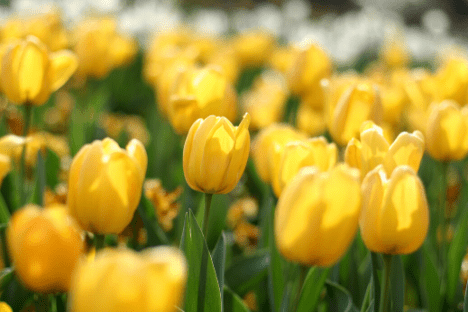
Of course, your cats and dogs should generally be discouraged from eating plants, but you can have more peace of mind knowing the ones in your garden aren’t toxic. If you do notice that your pet has eaten a plant, you should check to see what they have eaten and about how much. When in doubt, call your veterinarian for reassurance and further instruction. If you’re concerned that your pet will get into your garden, always do your research before planting something new. Adding more pet-friendly plants to your yard is a win for you and your pet; you can beautify your garden and add curb appeal while helping your pet wander your yard safely.
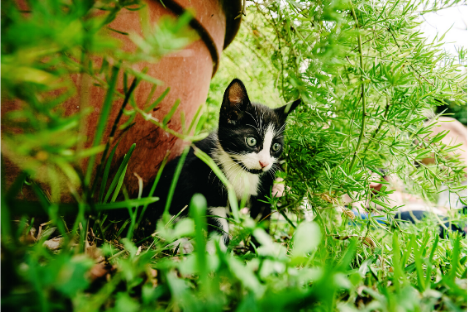
If you have any questions about the home buying process, contact one of our licensed Mortgage Loan Originators. If you are ready to buy a home, click here to get started!